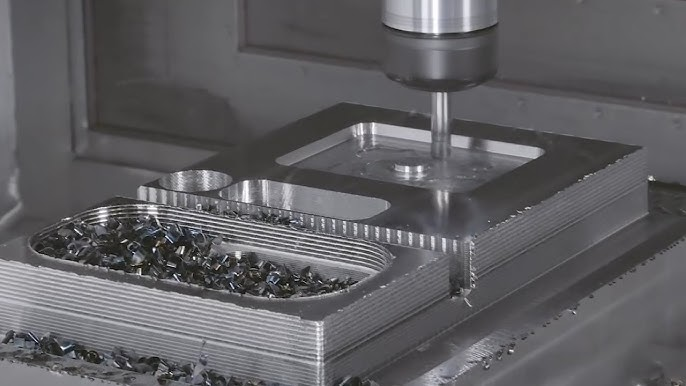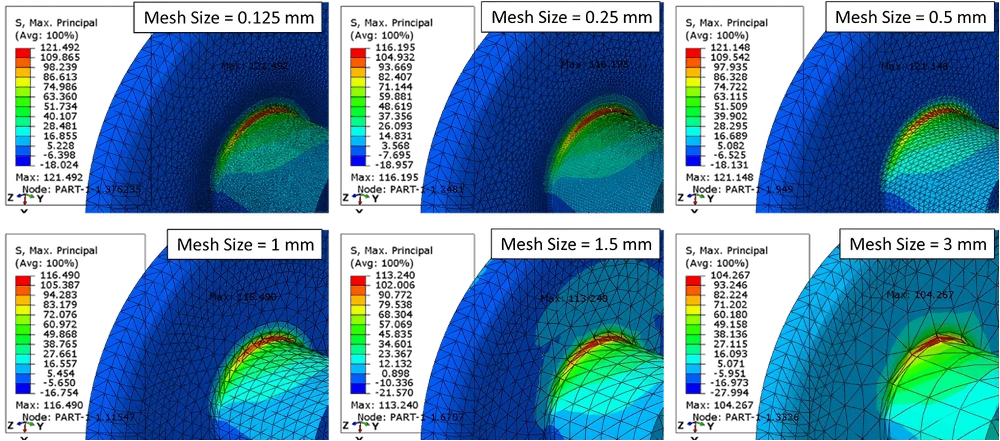1.0 Introduction
Electropolish is the removal of metal from a workpiece surface using an electrical current routed via an electrolyte solution. The procedure takes use of the fact that elevated areas of the workpiece surface, attract more energy than other surfaces when the conditions are just right As a result, there will be more material removed from these regions. Workpiece surfaces are smooth and brilliant after electropolishing, which adds to the process's appeal. Electropolishing removes burrs and stock from all exposed surfaces unless they are insulated or covered.
Unlike mechanical polishing, electropolishing does not require any particular tools. The components are attached to the anodic side of a circuit, and cathode rods suspended in the solution complete the circuits.
Mechanical polishing, as opposed to Electropolishing polishing, is the process of making a part's surface smooth and shining mechanically. Mechanical polishing removes layers of material from metal objects using abrasive belts and wheels. The process used varies depending on the source material's condition and the desired finish. . This is a time-consuming and inconsistent metal finishing procedure that requires operator control.
2.0 Mechanical Polishing Process
Grinding, polishing, and buffing are the three primary phases in the mechanical polishing process, and they are usually done in that sequence. Grinding, in general, allows for significantly more forceful abrading than polishing. Polishing, like buffing, is a much more intense abrading activity.
2.1 Grinding
Grinding is usually used to complete objects whose geometry have previously been established by other processes. Grinding machines are made to grind flat surfaces, external and internal cylinders, and contour shapes such as threads. To manufacture contour forms, special shaped wheels with the opposite of the desired contour to impart to the project are commonly utilized. In tool rooms, grinding is also used to shape cutting tool geometries. Grinding’s applications are growing to incorporate additional high-speed, high-material-removal processes, in addition to these classic ones.
Grinding takes place on the grinding wheel's perimeter or face. Edge grinding is significantly less common than face grinding. To remove material, a rotating grinding wheel with abrasive particles is utilized. A grinding wheel is composed up of abrasive and sticky particles. The wheel's form and structure are determined by the bonding substance, which maintains the particles together. The essential properties of a grinding wheel are determined by these two parts, as well as how they are formed.

2.2 Polishing
Using abrasive grains linked to a high-speed revolving polishing wheel, polishing eliminates scratches and burrs and smooths uneven surfaces. The wheels are made of a variety of materials, including canvas, leather, felt, and even paper, and are thus highly adaptable. The abrasive particles stick to the perimeter of the wheel.
The wheel is provided with new grits when the abrasives have worn down and been used up. Rough polishing is done with grit levels ranging from 20 to 80, finish polishing with grit levels ranging from 90 to 120, and fine finishing with grit levels beyond 120.

2.3 Buffing
Buffing resembles polishing in appearance, but it serves a different purpose. Buffing is a technique for creating lustrous surfaces. Buffing wheels are constructed of comparable materials to polishing wheels such as leather, felt, and cotton, but they are typically softer. The abrasives are exceedingly fine and are housed in a buffing compound that is forced into the wheel's exterior surface while it revolves. Polishing, on the other hand, requires the abrasive grits to be attached to the wheel surface. Abrasive particles must be replenished on a regular basis. Buffing has historically been done by hand, however machines have been developed to automate the process. The speed ranges from 2400 to 5200 meters per minute.

2.4 Mechanical Polishing Considerations
Mechanical polishing gives low and high purity applications an excellent surface profile. Mechanical polishing, on the other hand, not only fails to remove inclusions, but also tends to force them further into the surface and even aggravates them by seeking to pick up more abrasive particles. Furthermore, the mechanical finishing process removes impurities from components and provides shining surfaces. Electropolishing, on the other hand, results in a completely featureless surface. It reveals the metal's true crystal structure without the deformation induced by cold working, which is usually visible when mechanical finishing methods are utilized.
3.0 Electropolishing Process
The following process factors are involved in electropolish:
- Electrolyte solution.
- Solution temperature.
- Cycle time.
- electrical contact
- Current density.
- Burr location.
- Burr thickness.
A metal portion will function as the anode in the process, while another metal part will act as the cathode. A DC power supply connects the cathode and anode together. A polarized layer develops on the metal workpiece's surface when an electrical current is applied to it. Metal ions form on the metal part's surface, which must diffuse through the layer to create metallic salts. The process's brightening and leveling effects are influenced by the polarized film's strength and viscosity.
The projections are more exposed to electrolytic action and have lower electrical resistance than the depressions because the coating is thinner over them and thicker over the metal depressions. Surface material dissolves more quickly where the film is thinner, such as over projections, than where it is thicker, such as in depressions. Metal salts flow through the polymerized anodic sheet and into the electrolyte solution, where they are either dissolved, deposited on the cathode, or precipitated as sludge.
As a result, electropolish solutions can be classified as complete sludging, semi-sludging, or non-sludging.
Burrs in deep holes or disguised by the workpiece's design may not get the same amount of "throwing force" from the electrolyte or electrical action as exposed burrs, and so will not be removed unless supplementary cathodes are used to deliver extra energy to these locations. Pitting can happen when the wrong circumstances are used.
3.1 Considerations for Electropolishing
- Workpiece Surface Conditions
Electropolishing outcomes may be less than ideal due to several surface problems. On-metallic content in the metal, improper annealing, large-grained surface, insufficient cold reduction, or excessive cold working are some of these difficulties.
- Process Controls
To achieve the optimum results, the electropolishing process should be regulated and standardized. Inadequate and unstable commodities emerge from a lack of process controls. Other crucial parameters, including as acid concentration, metal content, and a supply of clean ripple-free DC power, should be continuously checked during the process.
3.2 The benefits of electropolishing
- Corrosion resistance is improved.
Corrosion starts at or near the surface in all types. Surface conditions and characteristics are always degraded by all fabrication and handling processes. Surface impurities such as grease, dirt, iron, and other metallic particles are common during machining, welding, and fabrication. Cutting, machining, handling, and polishing leave iron and abrasive particles embedded in the surface of a material. Surface contaminants interfere with the production of stainless steel's naturally occurring corrosion-resistant oxide layer and are frequently the source of corrosion. Surface material and impurities are removed by electropolishing. Electropolishing is used to remove free iron, inclusions, and embedded particles from the material's surface.
- Surface Finish Enhancement
Electropolishing removes a homogeneous layer from the workpiece's surface, leaving it clean and free of dirt and other contaminants. . The human hand is frequently used to polish mechanical parts. As a result, it was unable to remove a uniform from the workpiece subsequently.
- Product Adhesion is Reduced,
Electropolishing can minimize product adherence and contaminant accumulation by improving the microfinish. Reduced adhesion can help reduce product accumulation and extend duty cycles considerably. Cleaning may be done in less time and with less effort when necessary.
- Deburring
Electropolishing is commonly used for deburring. The current density inside the surface profile is larger at high points and lower at low points throughout the electropolishing process. The rate of the electrochemical reaction is exactly proportional to the current density. The material dissolves quicker at the higher points because to the greater current density, which tends to level the surface. Electropolishing simultaneously deburrs and polishes the surface.
- Appearance
The resultant shiny surface is electropolishing's most apparent benefit. The method of electropolishing is not mechanical. There are no instruments in touch with the item, thus no directed polishing lines are created. After electrochemical treatment, the material has a microscopically smooth and very shiny surface.
4.0 Choosing between electropolishing and mechanical polishing
Mechanical polishing increases the smoothness of metal surfaces or metal components by eliminating surface roughness. Furthermore, mechanical polishing improves practically every sort of material, including stainless steel alloys, aluminum, metal surfaces, and even mirror qualities. Mechanical polishing procedures improve metal components that have been welded
Electropolishing, on the other hand, is a fantastic option for burr removal, scratch cleaning, and polishing. Electropolishing can also assist improve the production process if a large number of metal items require a superior surface quality.
Moreover, if we have a smaller number of prototypes mechanical polishing is preferred to electropolishing, because the cost of electropolishing a prototype is much higher.
4.1 Conclusion
Each type of metal benefits from both electropolishing and mechanical polishing.
Both methods aid in the concealment of scratches.
Finally, mechanical polishing produces no hazardous chemical reactions and works on both metals and polymers.
Electrolytic polishing improves corrosion resistance while also making it easier to polish a large number of metal parts.
Understanding the distinctions between electropolishing and mechanical polishing can assist you in making better options based on your needs and budget.







